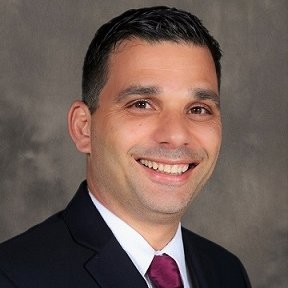
Ran Regev's Military Service
Ran Regev joined the IDF (Israeli Defense Forces) at age 18 and volunteered to the first infantry brigade (“Golani”).
His basic training was done as part of the elite reconnaissance unit, a grueling four month of introductory military life learning basic tasks such as how to handle weapons, different drills, working as a team and much more.
The basic training was performed in the “bezek” camp on the outskirts of Jenin. During basic training, an adjacent camp of soldiers was attacked by multiple Palestinian terrorists, and many were slaughtered in their sleep.
After 4 months of basic training Ran Regev did an extra two month at the elite/notorious camp area 100 in the norther part of Israeli learning basic commando survival skills.
This training was cut short as Ran Regev’s unit was deployed to the Lebanese border to protect the northern cities and settlements from the waves of terrorist incursions trying to perpetrate mass casualty attacks on civilians.
Ran Regev was among a small group of soldiers selected to protect the border from within the purple area (the DMZ zone inside Lebanon that served as a buffer between Israel and Lebanon). Ran Regev was in a small outpost “Nebi El Awedi”. The service in the outpost was very intense, it was remote from any other IDF controlled baes, there were only 10 other soldiers in the base fending for themselves.
Ran’s squad was then sent to professional training as a signal Corp/technologist technician in the center of Israel. The 5-month course included extensive training in various communication and control systems including cable systems, microwave, UFH, VFH, encryption and much more.
Upon finishing the course Ran was assigned within the Golani brigade to the 13th battalion during its summer training in Hushneia in the Golan Heights. Ran served as part of the battalion’s communication & signal team in charge of the entire battalion relevant system. The summer training included multiple exercises within the Golani brigade as well as armored divisions, the air force and much more. Ran worked as the signal Corp officer’s right-hand man and was singled out to continue to officer school.
The first part of officer training was conducted in officer school 1 (Bahad 1) on the outskirts of Mizpah Ramon in the southern Negev desert.
During officer school, Ran’s platoon was sent to Northern Gaza to assist in defending against the civil unrest and the continued terrorist attacks.
Upon finishing of the first part of office school, there was a gap of several months until the beginning of the professional signal, technology & computer officer school and Ran was assigned back to Golani, this time to the 12th battalion (the same battalion Ran’s father, retired Captain Zvi Regev has started his military service in).
The 12th battalion was in Nablus and Ran jumped in immediately as part of the comm’s team. He was invited to attend the attend the officer’s meeting as a non-commissioned officer and was happy to reunite with his former commanding officer, Lieutenant Eyal Mishal Levi.
After several weeks in Nablus the battalion was sent to assist against the new wave of terrorist attacks from Gaza and we were stationed in the notorious city of Han Yonis and mainly operated in the hornet nest of Bani Sohela.
After assisting in Gaza, the battalion was sent to the northern border to defend the attacks from Lebanon, the battalion was stationed close to Ran’s hometown in Kiryat Shmona, and he was able to visit his grandparents pretty often.
The longest officer training in the IDF is the signal, technology and computer cores training. It lasts 7 months and includes both extensive academic studies of technology, wave theory and much ore as well as practical training on how to incorporate the many systems within the military units including installation, maintenance, operation and supervision. The signal office is one of the commander’s closet advisers and service as both a technical officer as well as an operational one.
Upon successfully finishing officer school, Ran was given the rank of first lieutenant and assigned as the signal officer of the 947-air force anti-aircraft unit (stinger anti-aircraft missiles).
Ran served as both a signal officer and as a second operation officer in charge of supervising the battalion’s ground operations.
Quickly upon arriving at the unit, Israel has signed a piece agreement with the PLO terrorist group including the arch terrorist, Yaser Arrafat. Despite the fact that the Palestinian clearly said that they will not honor the agreement and will try to kill as many Israelis in every chance that they get, Israel decided to turn a blind eye and practically commit national suicide.
On the heels of the first intifada, the unit (947 anti-aircraft battalion) was sent the Gaza strip, this time as the battalion in charge of the central city of Dir El Ballach. The battalion would be stationed for 4 months in Gaza and then go back to its home base in Tel Nof for 4 months. Throughout the 14 months of Ran’s service in the until, about 8 of it was in the Gaza strip.
Once the full effect of the agreement with the blood thirsty terrorist PLO group was enacted, the battalion retreated to the Gosh Katif area in hopes that this would bring piece. It did not. (In 2005/6 Israel completely left the Gaz strip in hope that the blood thirsty terrorist will finally have piece with us. That didn’t work as well).
Ran was promoted to the rank of Lieutenant and went on to his second assignment as an officer – this time stationed in the 9700 Intelligent Corp unit. This unit was in charge of visual intelligence gathering, comprising an observer’s unit and unmanned aircraft. Ran was the deputy signal officer for the unit in charge of the day-to-day communications unit operations.
After almost 4 years of service, Ran was discharged at the rank of Lieutenant at the age of 22.